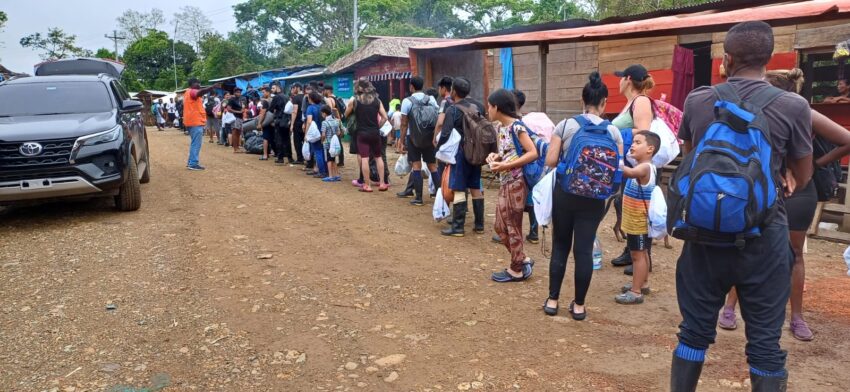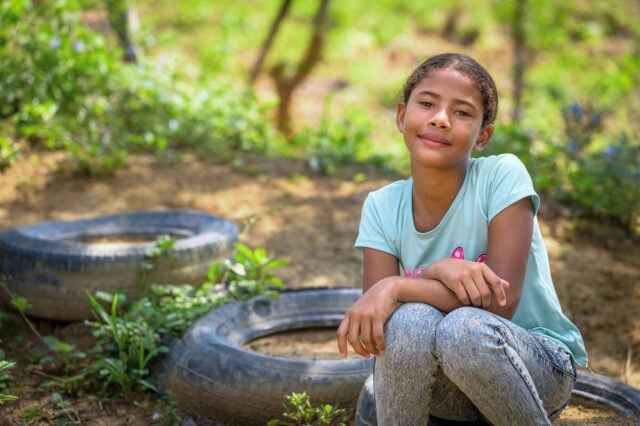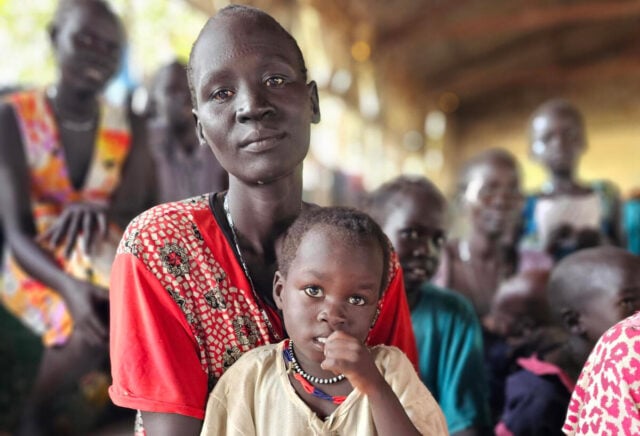Migration across Central America is escalating, with more families with children seeking better opportunities outside their home countries. Migrants primarily cite poverty and economic hardships, violence, and food insecurity as reasons for leaving. Adding to the surge in migration is the exodus of Venezuelan migrants, who are leaving their homeland in significant numbers, as reported by the United Nations.
Central America migration: Facts, FAQs, and how to help
- Fast facts: Central American migration
- Where do most Central American immigrants come from?
- Why are Central American migrants coming to the U.S.?
- How many people are migrating from Central America to the U.S.?
- What is World Vision doing to help at the Mexico–U.S. border?
- Where in the Americas is World Vision providing humanitarian aid?
- What is World Vision doing in migrants’ home countries?
- How can I help children and families in the Central American migration crisis?
Fast facts: Central America migration
- Families are migrating north due to poverty, violence, and food insecurity.
- Migrants at the southern U.S. border predominantly come from El Salvador, Guatemala, and Honduras.
- UNICEF reports an estimated 4.1 million children will need humanitarian assistance in Mexico and Central America in 2024.
- Weather-related events such as the El Niño weather pattern and other crises threaten areas already affected by food insecurity and past disasters.
- At the Mexico–U.S. border, World Vision and church partners aid vulnerable families with food and basic household and school supplies.
- In Central America, World Vision partners with churches, governments, local businesses, and schools to build resilience and create a safer, more nurturing environment, helping people remain hopeful at home.
Where do most Central American immigrants come from?
Most Central American migrants come from three of the region’s seven countries — El Salvador, Guatemala, and Honduras — referred to as the Northern Triangle. It’s called the Northern Triangle because the countries are clustered in a triangle at the northern tip of Central America. Guatemala, the northernmost of the three, borders Mexico.
All three of the Northern Triangle countries rank among the poorest in the Western Hemisphere and are plagued by chronic violence.
Why are Central American migrants coming to the U.S.?
Many factors cause people to uproot their families. The most common reasons among Central American migrants are extreme economic hardship and lack of opportunities, food insecurity, political insecurity, violence, natural disasters, and extreme weather–related events.
How many people are migrating from Central America to the U.S.?
There is no clear count of how many people are migrating to the U.S. from Central America. But the Migration Policy Institute says of the 3.4 million Central Americans living in the U.S., about 85% of them are from El Salvador, Guatemala, and Honduras. At any given time, there could be thousands of people journeying north from their home countries. According to U.S. Customs and Border Protection*:
- Over 450,000 people arrived at the U.S. border in 2020, as the coronavirus pandemic slowed migration across the world.
- That number nearly quadrupled in 2021 to at least 1.7 million migrants who were returned to their home country or detained in the U.S., at least temporarily, at the U.S.–Mexico border.
- More than 189,000 people reached the U.S. border in June 2021 — the highest number ever seen for one month in more than 20 years. Numbers kept climbing in subsequent months that year.
*Numbers are based on the fiscal year.
What is World Vision doing to help at the Mexico-U.S. border?
Since late 2018, when one of the large migrant caravans arrived in Tijuana, Mexico, World Vision staff have been working with local faith-based organizations to help migrant families. We’re working with partners along the border in Arizona, California, and Texas, where we’re supporting vulnerable families who need essential supplies like food, water, hygiene items, and basic household and school supplies.
Where in the Americas is World Vision providing humanitarian aid?
Since 2019, World Vision has been actively responding to the Central America and Venezuela crisis through our program “Hope Without Borders” in Central and South America. From 2019 to March 2024, we have supported over 2.1 million people with programs focused on child protection, education, food security, access to clean water, sanitation and hygiene (WASH), and livelihoods in countries including Guatemala, Honduras, El Salvador, Nicaragua, and Venezuela.
We are also facilitating economic programs through employment support and training, along with mental health services for those affected by the crises. Collaboration with faith-based organizations is vital, enabling us to offer safe spaces, skills training, and language classes. World Vision’s cash transfers and food aid have become an essential lifeline for thousands of people in Central America and Venezuela.
What is World Vision doing in migrants’ home countries?
We’ve been working for decades throughout Latin America, including in Mexico, El Salvador, Guatemala, and Honduras, where child sponsorship is helping families thrive at home.
World Vision has designed the Hope at Home: Building Resilience in Central America framework, which aims to address the root causes of forced migration by building resilience at the individual, family, community, and societal levels. We do this by helping communities through programs on violence prevention; social inclusion; sustainable livelihoods; food security; water, sanitation, and hygiene (WASH); quality of education; health; and so much more.
One program raising hope among vulnerable youth in Central America is Youth Ready. Through this approach, we partner with local churches to support young people to discover their potential, develop specific career and life skills, establish support networks, build character and confidence, and plan for their future. This work is made possible largely through child sponsorship.
How can I help children and families in the Central America migration crisis?
Here are effective ways you can help Central American families living in precarious situations:
- Pray: Join us in praying for people in Central America, asking God to bring peace to communities, strength and integrity to leaders, and economic stability to families.
- Support U.S. foreign assistance by contacting your elected officials. It only takes a minute.
- Sponsor a child in Central America: Sponsoring a child is a personal way to show God’s love to a child in need. It also gives a family more reasons to remain in their community.



